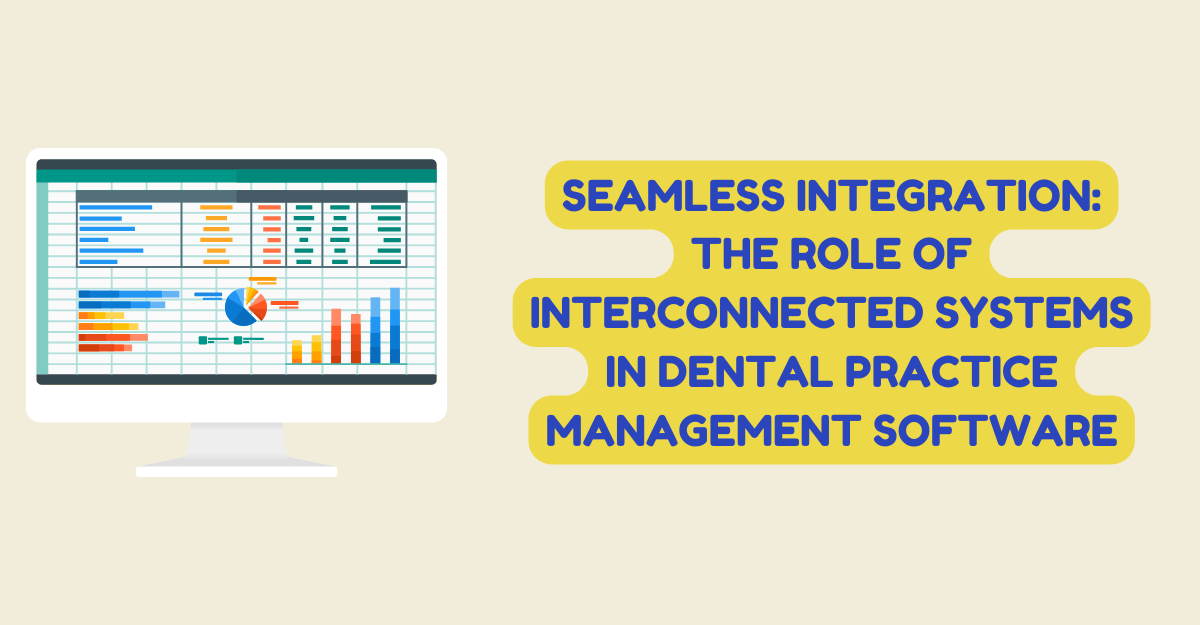
Seamless Integration: The Role of Interconnected Systems in Dental Practice Management Software
In the ever-evolving healthcare landscape, dental practices increasingly adopt technology to streamline operations and enhance patient care. At the heart of this digital transformation lies dental practice management software. However, the true potential of DPMS is unlocked when it seamlessly integrates with other systems, fostering a connected ecosystem that optimizes practice efficiency and elevates patient experiences.
The Fragmented Reality
Traditionally, dental practices have relied on disparate software solutions for scheduling, billing, imaging, and communication. This approach creates numerous challenges:
Data Inconsistency:
Duplication of patient information across systems leads to errors and inefficiencies.
Manual Workarounds:
Transferring data between systems requires time-consuming manual effort, increasing the risk of human error.
Fragmented Patient Journey:
Patients navigate disjointed touchpoints, hindering communication and satisfaction.
Interconnected Harmony
Seamless integration between DPMS and other systems transforms the practice into a well-oiled machine. Here’s how:
Patient Relationship Management (PRM):
Integrating DPMS with a PRM system enables personalized communication, automated appointment reminders, and targeted marketing campaigns, fostering stronger patient relationships.
Electronic Health Records (EHR):
A direct connection with EHR systems allows practitioners to access complete patient medical histories instantly, enhancing treatment planning and medication management.
Digital Imaging:
Integrating digital imaging software eliminates the need for physical X-rays, streamlining workflows and facilitating remote consultations.
Financial Management:
Integrating with accounting software automates billing and insurance claims, reducing errors and accelerating reimbursements.
Appointment Scheduling:
Online appointment scheduling tools integrated with DPMS empower patients to book appointments conveniently, reducing phone calls and wait times.
Laboratory Information Systems (LIS):
Integration with LIS facilitates real-time lab results delivery, allowing for quicker diagnoses and treatment decisions.
The Symphony of Benefits
The seamless integration of systems within a DPMS ecosystem yields a multitude of benefits for both dental practices and patients:
Increased Efficiency:
By implementing automation for various tasks, optimizing workflows to eliminate unnecessary steps, and reducing the need for manual effort, healthcare staff can now dedicate more time and attention to providing quality care to their patients. This boosts overall efficiency and ensures that patients receive the best treatment and attention from healthcare professionals.
Improved Accuracy:
Consistent data in healthcare ensures accurate and uniform maintenance of patient records and information across different systems, minimizing errors and discrepancies, enhancing patient safety, and improving financial accuracy.
Enhanced Patient Satisfaction:
A smooth and connected patient journey fosters better communication, reduces wait times, and personalizes care, leading to increased satisfaction.
Data-Driven Insights:
Integrated systems, such as those used in healthcare or business, can generate a wealth of valuable data. This data can provide insights into the performance of a practice or organization, enabling decision-makers to identify areas for improvement and make decisions. By utilizing this data, businesses and healthcare providers can optimize their operations, improve patient outcomes, and stay ahead of the competition.
Competitive Advantage:
A dental practice equipped with a connected DPMS (Dental Practice Management System) ecosystem has a clear advantage over others. This advanced system provides a seamless and efficient workflow, from patient check-in to treatment planning and follow-up. It also allows for real-time data tracking and improves communication between patients and dentists. With this technology, patients can feel confident that they are receiving the best care and that their records are secure and easy to access. As a result, they are more likely to remain loyal to the practice and recommend it to others.
Conclusion
As technology evolves, the possibilities for seamless integration within DPMS like tab32 will expand. Cloud-based solutions, artificial intelligence, and machine learning hold immense potential for further optimizing practice workflows and personalizing patient care. Dental practices that embrace the power of interconnected systems will be well-positioned to thrive in the evolving healthcare landscape, delivering efficient, accurate, and patient-centric care.





